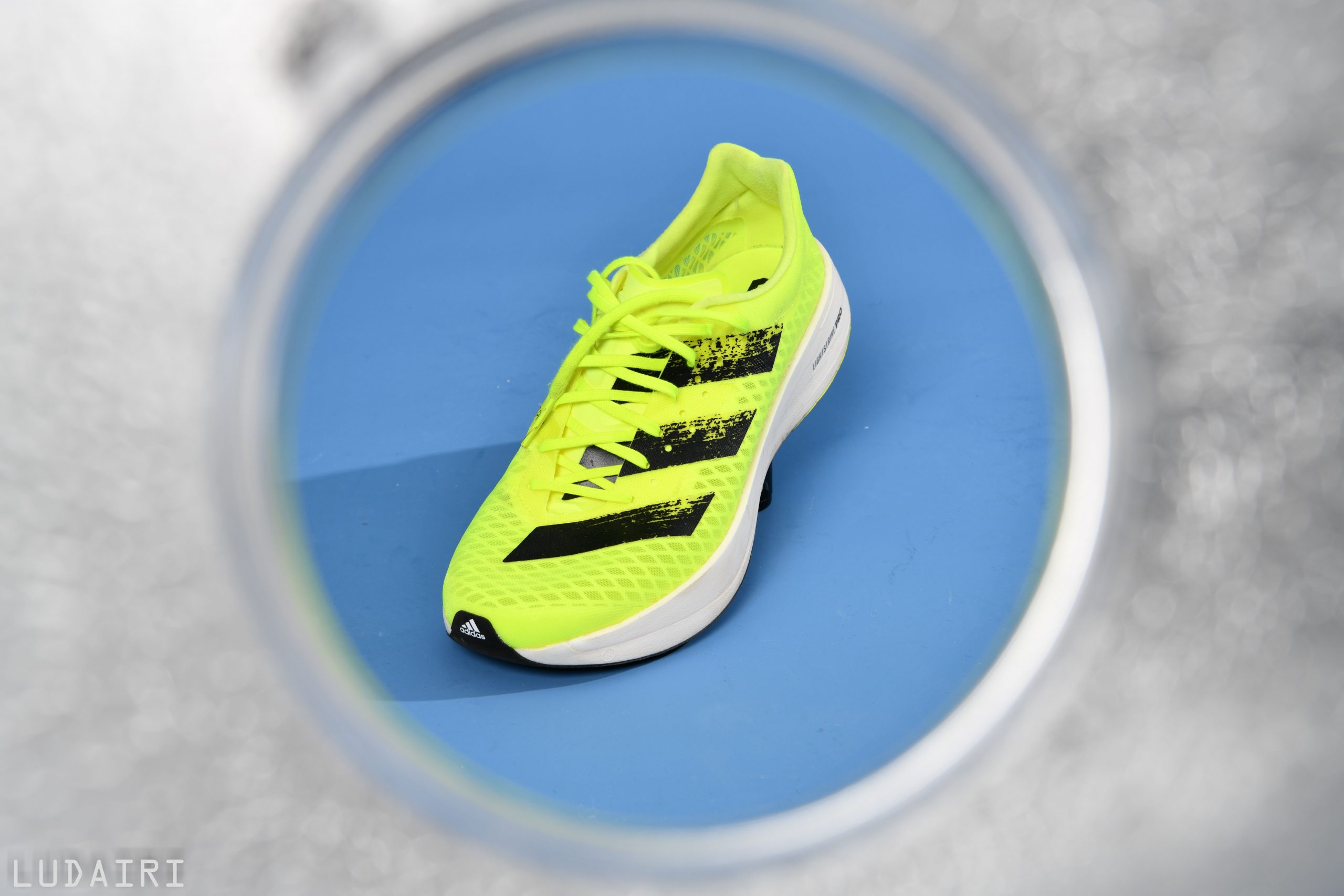Many of us were taken aback by Adidas Adizero Adios Pro whose performances has unexpectedly broken one record after another. This, according to some reviewer, may be the second running shoe to stun us after the NEXT%.

Coming out of nowhere, UltraBOOST made a great contribution to the sales volume of Adidas. Nevertheless, in spite of that, Adidas has still suffered several sales slumps before. It was because the fluorescent yellow Adios attracted quite a lot of attention in the match of 2008 in Berlin that there is now a better adios Pro which is more suitable for modern races and runners.

The technologies in Adizero Adios Pro are very strong. For example, its midsole material is by far Adidas’s most resilient material that is lighter and slicker than the classic BOOST. Thanks to the material, one will not feel much difference in the weight of the shoes in spite of the thickening of the midsole. At the height of seeking lightness, I think Adizero Adios Pro has done a very good job.

The internal structure of the carbon plate of adios Pro is different from those of other brands. The so-called EnergyRods consists of two parts: on the forefoot there are five carbon-fiber scaffolds that fits the bones of the foot and on the back there is a carbon plate for support. However, not being a professional researcher in this respect, I am not capable of saying how this carbon plate compares to others.

Some time after I bought the Adios Pro, I ran two 10kms in it. The first one was a contest, but in fact I still had little idea how the shoes were going to perform in the somewhat challenging match. Despite that, I was pleasantly surprised by the energy released by the midsole and carbon plate. It was rather cold that day, but the shoes’ cushioning and rebound were not in the least affected. What’s more, the Adidos Pro midsole could provide energy steadily on the hard road surface of the track, which, to me, was stunning.

Notwithstanding its excellence, I still can’t get the “particularly strong push”, as is called by many reviewers. Therefore, from my perspective, the detached EnergyRods carbon plate does not seem to be getting the best out of it.

Besides these, I am also impressed by the shoes’ overall stability which is much better than that of NEXT%. When I picked up my running speed, Adios Pro seemed to understand my mind and offered me its superior stability. With respect to its stability, I’ve inquired other runners around me who happened to own a pair of Adios Pro, and it turned out that we were all in agreement on its excellence.

However, there are also shortcomings of it. After running 5 km in the shoes, I suddenly felt numb on the soles of my front feet. Finally I found out that it had something to do with the thick midsole that is likely to give rise to overreaction to my soles after high intensity exercise. However, this is just for me. On the one hand, I am relatively heavy, weighing more than 150kg, and on the other hand, I am not capable of activating Adios Pro with both leg and foot strength.

The outsole, which was not considered good before, seems not so bad, either. By the end of my 20k run, the outsole didn’t wear that badly on the tarmac and didn’t have a slippery problem.

Overall:
As a running shoe with both reputation and outstanding appearance, the Adios Pro is definitely far from perfect, and it seems to require a lot more abilities from the runner than I had thought. Nevertheless, this does not mean that it is not good or unsuitable for us. Instead, every one of us, who has love for it and running, may still take a shot and try to enjoy it.